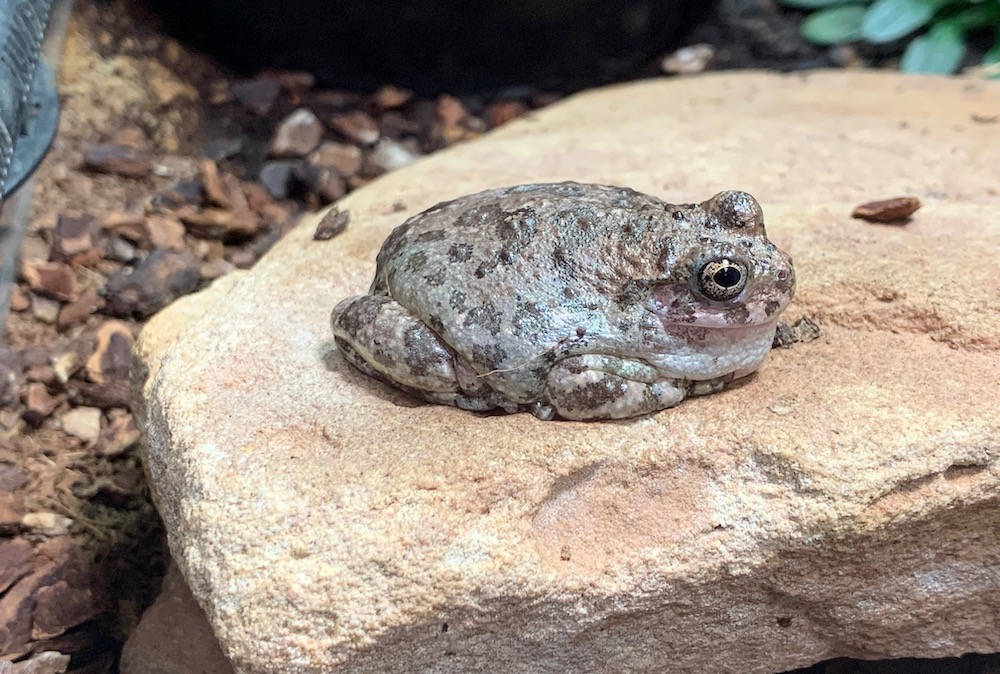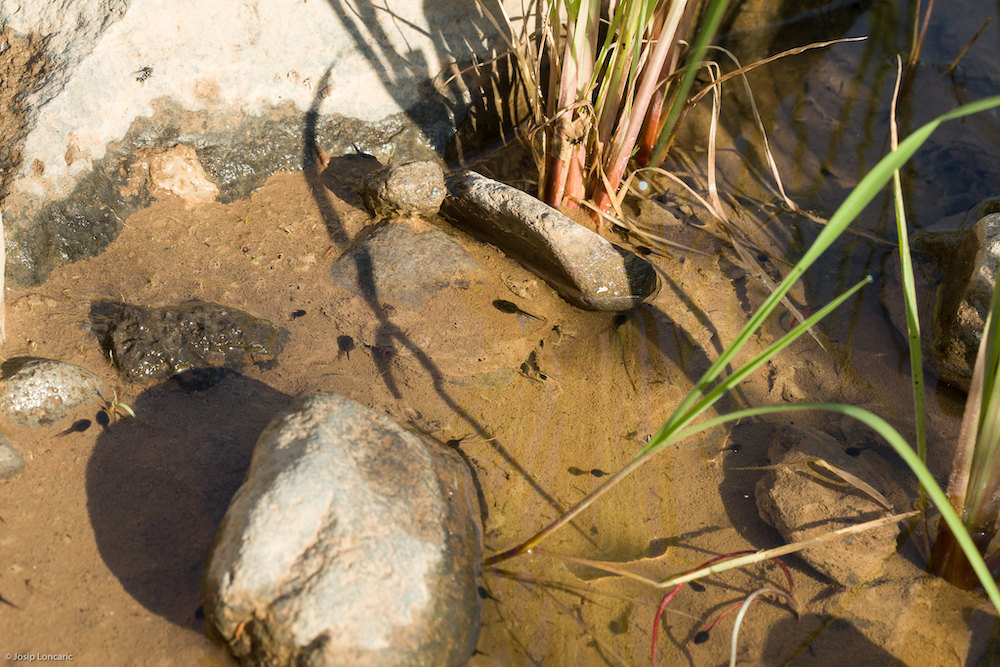
By Jennifer Macke
How does an amphibian survive in a dry climate like New Mexico’s? It’s a good question! To answer it, let’s use the canyon treefrog as an example of the adaptations that make survival in a dry climate possible for our local amphibians.
Amphibians and Water
One of the hallmarks of amphibians is their dependence on water. Their skin is moist and permeable, and an amphibian will quickly die if it loses water from its body. Most amphibians require water to lay their eggs, and their offspring (tadpoles or larvae) usually grow up in water.
Amphibians don’t drink. You will never see an amphibian put its head in the water and take a gulp. Instead, they obtain the moisture they need by absorbing it through their skin. For many frogs, the skin on the underside of their hind legs is specially adapted to absorb water. In some cases, they soak their body in water in order to “drink.” In other cases, they are able to absorb enough water simply by sitting on slightly damp soil, no standing water needed.
Canyon Treefrogs

One of the most common amphibians on the Pajarito Plateau is the canyon treefrog (Hyla arenicolor). Don’t let the name “treefrog” mislead you. It is called a treefrog because of its close genetic relationship with other treefrogs, including rainforest species. But our “treefrog” doesn’t live in trees, and in fact, it looks more like a toad than a frog!
The canyon treefrog utilizes several strategies to survive a dry climate. First, the tough outer skin on their back limits water loss. Like most frogs, the skin on their underside is adapted to absorb water, so it is soft and moist. When they are sheltering during dry weather, they keep their soft underside carefully tucked down against a non-porous surface to limit water loss.
As another adaptation to a dry climate, canyon treefrogs tend to live near places that have standing water during at least part of the year. These areas are most often in canyon bottoms, or along streambeds that have flowing water, even if it is only wet there occasionally.
The canyon treefrog also limits water loss by remaining inactive and sheltered during dry times of the year. They usually shelter in deep cracks and crevices in rock, where some moisture remains even in dry periods. They also tend to cluster together in groups, which helps to further reduce their water loss, as they keep each other moist.

Tadpole Sightings
If you find tadpoles on the Pajarito Plateau, it’s likely that they are canyon treefrogs. They breed during monsoon season, utilizing small pools of temporary water all over the Plateau. During the monsoons, you will hear the adult males calling, and you may find eggs or tadpoles in almost any small pool of water.
During the monsoon season, treefrogs are able to move around freely in search of mates and water. Almost any new body of water will be “found” and become their new breeding ground. When PEEC built its pond in the wildlife observation area at the nature center, canyon treefrogs were using it as a breeding site within a couple of years. The water retention pond behind Smith’s has also been colonized by canyon treefrogs. They are clearly able to move around enough to find and exploit small bodies of water anywhere that water occurs.
Other Frogs and Toads in Our Area
Some of the other native frogs and toads in our area are the Woodhouse’s toad, chorus frog, and New Mexico spadefoot toad. Each has its own set of adaptations to survive. The non-native and invasive American bullfrog is also very abundant along the Rio Grande. For more information on the reptiles and amphibians in Northern New Mexico, view our online Reptile and Amphibian Nature Guide.
